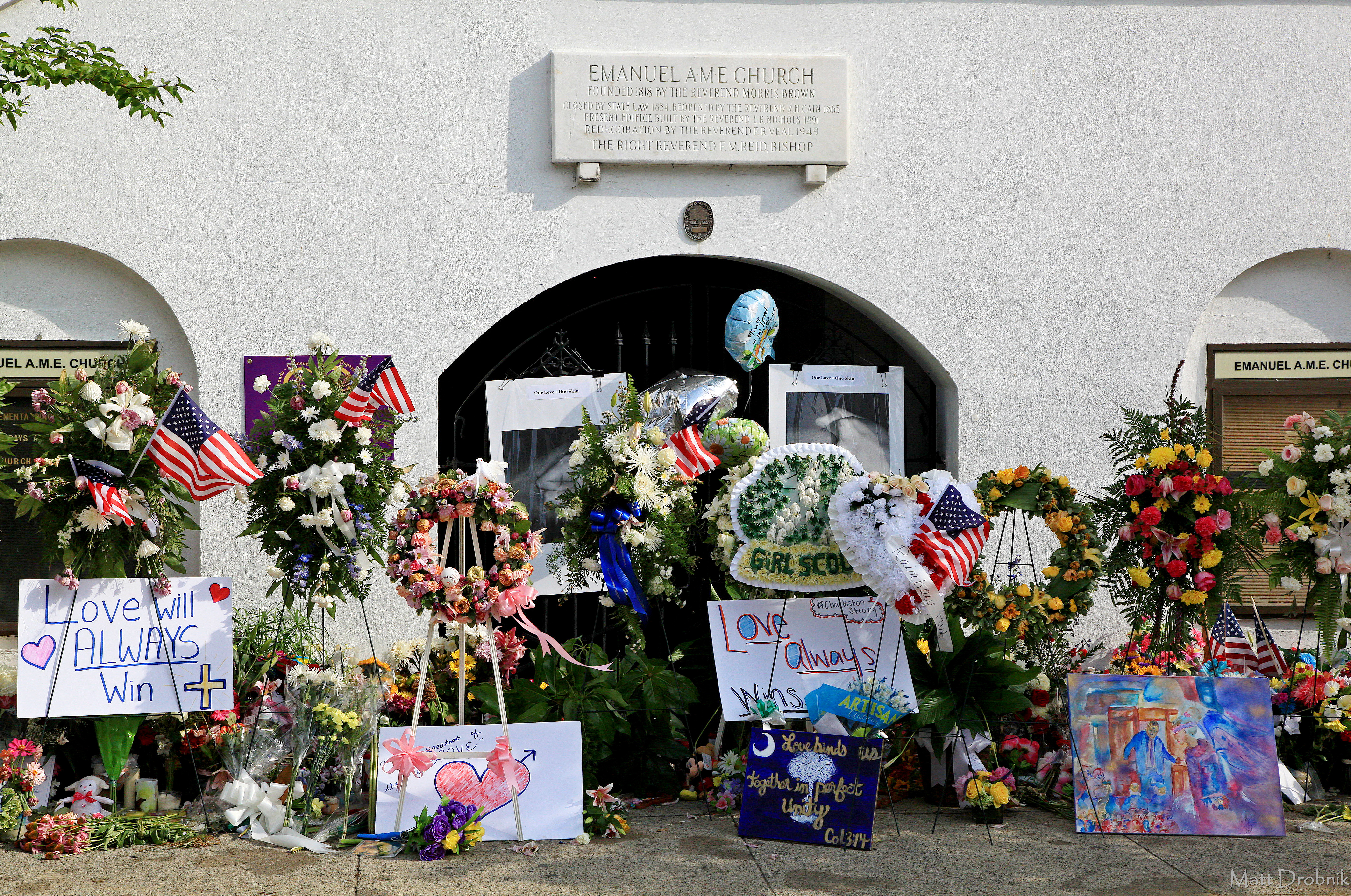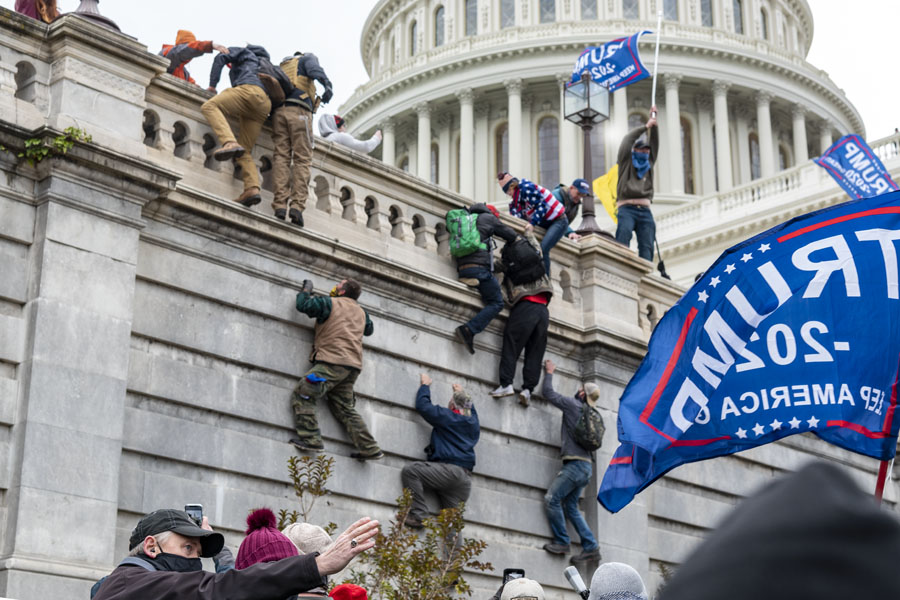Discussions of domestic terrorism have become increasingly relevant in the news, especially following the January 6 attack on the U.S. Capitol. Such disagreements have filtered into more general statements about domestic terrorism: President Biden declared white supremacist terrorism as a historical and lethal threat to the U.S. homeland as he commemorated the Tulsa Race Massacre’s centennial this June.
The Factual ran a poll several weeks ago in its newsletter asking whether domestic terrorism was a bigger threat to the United States than foreign terrorism, and received a nearly evenly split response across 492 votes: 47% of voters said yes, 44% said no, and 8% were unsure. But what does the data say? Is domestic terrorism, particularly from the right, really on the rise? And how does that threat compare to the dangers from foreign terrorists?
This week, The Factual consulted 59 articles from 33 sources across the political spectrum to answer these questions and help readers understand the threat of domestic terrorism, especially relative to other types of terrorism.
Please check your email for instructions to ensure that the newsletter arrives in your inbox tomorrow.
What Is Domestic Terrorism and Who Are Today’s Domestic Terrorists?
To date, the United States does not have a specific law on domestic terrorism, despite calls and sharp disagreements about a law’s passage following January 6. It does, however, bear a specific legal definition. 18 U.S. Code § 2331 defines “domestic terrorism” as activities that:
- involve acts dangerous to human life that are a violation of the criminal laws of the United States or of any State;
- appear to be intended to:
(i) intimidate or coerce a civilian population;
(ii) influence the policy of a government by intimidation or coercion; or
(iii) affect the conduct of a government by mass destruction, assassination, or kidnapping; and - occur primarily within the territorial jurisdiction of the United States.
The Congressional Research Service found that the January 6th incident fulfilled the above legal parameters to be defined as domestic terrorism. Despite other attempts at creating a definition by the FBI, the Anti-Defamation League and the RAND Corporation, “domestic terrorism” remains an extremely fuzzy concept, which some have blamed directly on the lack of a specific domestic terrorism law. Regardless, we can glean several commonalities for the purposes of this article:
- It is violent and illegal.
- It occurs primarily within a given country, by its citizens or permanent residents.
- It is often ideologically motivated, typically aimed at changing some policy by overthrowing some established state order, frequently deliberately targeting civilians.
Following this definition, who constitutes American domestic terrorists in the 21st century? Research by the Center for Strategic and International Studies (CSIS), a bipartisan think tank based in Washington, DC, breaks 2020’s U.S. domestic terrorism threats into four categories:
- Violent right-wing: including QAnon extremists, anti-abortion violence, misogynistic terrorists like incels, neo-Nazis like The Base, militia movements, and sovereign citizens.
- Violent left-wing: includes certain segments of the Antifa movement, many radical environmentalists and animal rights activists, and militant anarchists.
- Salafi-jihadists: American citizens inspired by international groups like al-Qaeda or ISIS.
- Other: Violent groups that transcend a specific right- or left-wing ideology and encompass various views, namely the Boogaloo Bois, who primarily anticipate a coming second Civil War.
American domestic terrorists have used a wide array of tactics to engage in violence, ranging from the dramatic Oklahoma City Bombing in 1995 to the 1984 assassination of radio host Alan Berg to the spiking of trees in protest against the logging industry to mass shootings like Pulse and Isla Vista to a host of less infamous bombings, killings, and threats.
Comparing Terrorist Threats
Since 9/11, the threat of foreign terrorism has loomed large in the minds of Americans. In the aftermath, the U.S. targeted international terrorist organizations like al-Qaeda, and later, ISIS, as the primary threat to national security, degrading and often eliminating these threats to the American homeland. But by the FBI’s own admittance, the threat landscape has changed considerably since 2001. It now considers domestic terrorism — and in particular, “lone offenders, often radicalized online, who look to attack soft targets with easily accessible weapons,” as its number one terrorism concern.
A look at history from the past two decades confirms this assessment to be true. Since 9/11, foreign terrorists have been responsible for exactly one deadly terrorist incident, a mass shooting at Naval Air Station Pensacola in 2019. The shooter, a Saudi national training at the base, shot and killed three sailors, and it was later discovered that he had been in communication with al-Qaeda in Yemen since at least 2015.
Having spent $2.8 trillion on counterterrorism from 2002 to 2017 and created multiple new federal agencies specifically to combat foreign terrorist threats, the United States has largely stanched the wound left by 9/11, with a track record of only one failure in the 20 years since the tragedy of 9/11.
Meanwhile, CSIS has compiled a database of 893 domestic terrorist plots and attacks from 1995–2020. These include such diverse recent incidents as the misogynistic “incel” killing of two women at a Florida yoga studio to the militant anarchist Willem van Spronsen’s attack on an ICE facility. Though these actions share in common violent criminality and the other trappings of domestic terrorism, they are not just the product of one overriding motivation, but a whole host of extreme and frequently competing political demands.
The wide array of motivations, tactics, and easy access to weaponry has rendered it far more onerous for law enforcement to successfully combat domestic terrorism, since they are up against a threat that is far more diffuse and has far more ease striking within the American homeland.

Source: CSIS.
With the resurgence of extremist militancy not seen since the 1990s “militia movement” and the nascence of conspiracy theories like Pizzagate and QAnon amid a wave of election misinformation, a whole host of new and diverse right-wing extremist organizations have come to the fore, with their own diverse set of opinions and ideologies unified by political aims along the hard right.
The Extremist Crime Database (ECDB) found that after separating 9/11 and the Oklahoma City Bombing, between 1990 and 2019, jihadi extremism killed 154 Americans, while far-right terrorism killed 345. It identified 333 foiled jihadi plots between 2001 and 2019, compared to over 800 far-right ones in the same period. ECDB data further found that from 1990 to 2019, far-right terrorists were more likely to have killed law enforcement and military officials than Islamist extremists in attacks other than 9/11 and Oklahoma City.
Even discounting January 6, far-right terrorism is far and away the biggest domestic terror threat. Neo-Nazi Cameron Shea was convicted this year of an intimidation campaign against journalists, including threatening messages festooned with swastikas and other Nazi symbolism. In 2018, the Tree of Life Synagogue shooting killed eleven people in the single deadliest attack on American Jews in US history.
Relative to the risk of foreign terrorism, let alone other types of domestic terrorism, data demonstrate far-right extremism poses the most significant terror threat to the US homeland irrespective of one’s views on Jan. 6.
Even so, left-wing terrorism remains a pertinent threat to the United States as well. Incidents like the 2017 attack on a congressional baseball game by a left-wing political activist or recent railway sabotages by radical anarchists in solidarity with Indigenous movements still pose major challenges to law enforcement and intelligence, far after the heyday of left-wing violence in the 1960s. Specific actions from last year’s unrest in the wake of George Floyd’s death are considered by some to be terrorism as well, including the burning of a police station in Minneapolis by protestors. Others have argued these cases to be examples of “opportunistic vandalism.” Though these instances are frequently less deadly than right-wing terrorism, left-wing domestic terrorism is also a potential threat.
Perceived Threats vs. Reality
Even with examples demonstrating the risks of domestic extremism and far-right extremism, in particular, to the American public, why do we remain so preoccupied with the risk of foreign terrorist attack? Much of the answer lies in the media environment. The horror of 9/11 drove a preoccupation with the threat of foreign attacks on U.S. soil, particularly by Muslims. Attacks perpetrated by Muslims receive 357% more coverage than attacks by non-Muslims, among a host of other factors including casualties, whether the suspect was taken into custody, and the nature of the target. Combined with entertainment that is preoccupied with the threat of “Muslim invaders,” or depicting people of Arab descent as terrorists, a link is made in media between Muslims, foreign attack, and terrorism.
Indeed, two mass shooting domestic terror incidents illustrate this phenomenon: the Charleston AME shooting and the Pulse nightclub shooting. A study published in the Washington Post showed that though both were mass shootings committed by individuals who were radicalized and specifically targeted groups of civilians for violence, the term “terrorist” was primarily used to describe Omar Mateen’s shooting at Pulse. Meanwhile, the term “mental health” was 3.5 times more likely in articles about AME shooter Dylann Roof.

Memorials outside of Emanuel AME Church. Source: Flickr.
Though the threat landscape has changed significantly since 9/11, our collective concept of terrorism is inextricably linked with images of Osama bin Laden, buildings in collapse, and a horrific loss of life that reshaped both the federal government and global politics. Indeed, September 11th killed 18 times more people than the Oklahoma City Bombing, the second deadliest terrorist attack in our history.
But this concept of terrorism, though seared into our collective memory, does not reflect the current assessment of government, academic, and journalistic experts on the new threats facing the American homeland. When the two deadliest terrorist incidents in American history are separated from the dataset, studies of the intervening two decades all come to the same conclusion: since these dramatic outliers, domestic extremism has been a deadlier threat than foreign terrorism.
Please check your email for instructions to ensure that the newsletter arrives in your inbox tomorrow.
Classifying January 6
Stakeholders from intelligence, politics, and media have weighed in, and sharp disagreements remain over whether to consider the Capitol attack an example of domestic terrorism. During congressional testimony, FBI Director Christopher Wray described it as “criminal behavior, plain and simple. And it’s behavior that we, the FBI, view as domestic terrorism.” Officers who were there have similarly described the rioters as “terrorists.”
Meanwhile, congressional Republicans have slammed such examinations of January 6 as needlessly partisan — Senator Ron Johnson suggested to colleagues that the FBI had advance knowledge of the incident and has defended the attackers for staying inside the rope lines while inside the Capitol.

Source: Flickr.
Though intelligence agencies remain divided as to the nature of the assault’s planning, others in the media have tried to make a distinction between the incident and some of its perpetrators, primarily by making a distinction between the actual storming and various “acts of terrorism” which occurred there. Individuals like the “zip tie guy,” the person who placed pipe bombs at the RNC and DNC the night before the riot, or those intending to “hang Mike Pence” for refusing to contest the election results committed acts of terrorism that were specifically directed and intended to be violent in nature, rather than the general mob that stormed the building out of a broader political animus.
This article does not aim to define January 6th one way or the other — rather, to provide information to the reader to make that decision based upon a variety of evidence. Though it was January 6 that has inspired discussion of domestic terrorism in the United States, the study of that day and its categorization remains up for academic and political debate. What is more clear is the extant and growing threat posed by domestic terrorism in the United States more generally.
Conclusion
Domestic terrorism is a multifaceted threat that cannot be boiled down to a common ideology, tactics, or motivation. Though all examples share in common a violent criminality directed at the state or at civilians by citizens of the U.S., the incidents mentioned in this article were often radically dissimilar in their means and ends. This diversity illustrates the difficulty of discussing domestic terrorism, of categorization, and of researching its purposes without stumbling into partisan wrangling. Regardless, independent data confirms one thing to be true: it is safe to say that regardless of ideology, domestic terrorism is a more substantial threat to the United States than foreign terrorism at this point, key among those threats being rising right-wing terrorism.
Since 9/11, the U.S. has been preoccupied with foreign terrorism. But since 9/11, the overwhelming majority of terrorist incidents in the U.S. have been perpetrated by residents, not foreigners. Chief among those perpetrators in the past several years are right-wing extremists of all stripes, many of whom engage in terrorism to spread odious prejudices like racism and homophobia. Nevertheless, homegrown Islamist extremism and militant left-wing terrorism remain pertinent threats as well. These facts are well-supported by the assessment of intelligence agencies, think tanks, academics, and journalists, and not just partisan statements by various political figures. Hopefully the rigorous study of history and data can remove any partisan doubt as to what threats are posed to the American homeland.
Appendix
This appendix shows all 59 articles from 33 sources across the political spectrum used to inform the findings of this article, as well as how the articles scored according to The Factual’s credibility algorithm. To learn more, read our How It Works page.
Interested in hearing more from The Factual? Our daily newsletter uses the credibility algorithm to analyze 10,000+ articles every day to highlight the very best journalism on trending topics.
Want to score articles yourself? Our browser extension and our microsite IsThisCredible.com let you drill down into any article and see why we score it a certain way.

